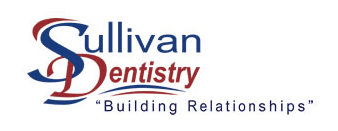Are you curious about what to expect during an awake tooth removal experience at Sullivan Dentistry? We’re here to guide you through the process, ensuring you understand every step and feel comfortable from start to finish.
Initial Consultation: Setting Expectations
Before undergoing an awake tooth removal procedure, the initial consultation plays a pivotal role in setting the stage for what to expect. During this meeting, your dentist or oral surgeon will evaluate your dental health, discuss the reasons for the tooth extraction, and explain the process in detail. This is the perfect opportunity to ask questions about the procedure, recovery time, and any potential complications. Understanding the steps involved can significantly reduce anxiety and prepare you mentally for the experience. For those particularly concerned about discomfort, exploring Tooth Extraction Pain Level: Real Insights can provide valuable perspective and reassurance.
The initial consultation also allows your dental professional to tailor the procedure to your specific needs. They may discuss types of anesthesia or sedation that will be used to ensure you’re as comfortable as possible during the extraction. Additionally, they’ll provide pre-operative instructions, such as fasting requirements or adjustments to your medication regimen, to ensure a smooth and safe procedure. Setting clear expectations during this first step is crucial for a successful outcome and a positive overall experience with awake tooth removal.
Anesthesia Choices: Staying Comfortable
When facing an awake tooth removal, understanding your anesthesia options is crucial for a comfortable experience. Local anesthesia is commonly administered to numb the area around the tooth, ensuring you feel no pain during the procedure. For those who experience anxiety or fear about dental procedures, sedation options such as nitrous oxide (laughing gas) or oral sedatives can be discussed with your dentist. These sedation methods help you stay relaxed and comfortable, while still being awake and responsive. It’s important to communicate openly with your dental professional about your comfort levels and any concerns you might have, so they can tailor the anesthesia to suit your needs.
Ensuring your comfort during a tooth extraction is a top priority for dental professionals. They are equipped with various techniques and medications to help manage pain and anxiety effectively. If you’re looking for compassionate and skilled dental care for your extraction needs, consider exploring Mukwonago tooth extraction services near you. Their expertise in providing a comfortable and stress-free experience can make all the difference in your tooth removal journey.
The Extraction Process: Step-by-Step
Embarking on an awake tooth removal journey can be daunting, but understanding the step-by-step extraction process can significantly ease your anxiety. Initially, your dentist will apply a local anesthetic to numb the area around the tooth to ensure a pain-free experience. Once the area is sufficiently numb, the dentist will use specialized tools to gently rock the tooth back and forth, loosening it from the jawbone and ligaments that hold it in place. In some cases, a small incision may be made in the gum to facilitate easier removal. Throughout this process, you’ll be awake but should feel no pain, only slight pressure. The final step involves carefully lifting and removing the tooth from its socket. Your dentist will then provide care instructions to ensure a smooth recovery, emphasizing the importance of following these guidelines to avoid complications. Understanding these steps can help demystify the process and prepare you for a successful awake tooth removal experience.
Immediate Aftercare: Managing Discomfort
After your awake tooth removal procedure, it’s crucial to focus on immediate aftercare to manage discomfort effectively. Initially, you may experience some swelling and pain, which is entirely normal. To alleviate these symptoms, apply a cold compress to the affected area in intervals of 20 minutes on and 20 minutes off. This will help reduce swelling and provide relief. Additionally, your dentist will likely recommend over-the-counter pain relievers or prescribe medication to manage pain levels. It’s important to follow their guidance closely and avoid any activities that could exacerbate the discomfort, such as drinking through a straw or eating hard foods. Rest assured, with proper aftercare, the discomfort will gradually subside, paving the way for a smooth recovery. For more detailed guidance on managing your dental health post-procedure, visit Sullivan Dentistry.
Recovery Tips: Ensuring Smooth Healing
After undergoing an awake tooth removal, it’s crucial to focus on your recovery to ensure smooth healing and minimize discomfort. First and foremost, adhere to your dentist’s aftercare instructions meticulously. This often includes resting for the first 24 hours, avoiding strenuous activities, and keeping your head elevated to reduce swelling. To manage pain, apply ice packs externally and take prescribed or over-the-counter pain relievers as directed. It’s also important to maintain oral hygiene gently but effectively, avoiding the extraction site during the initial healing phase. Opt for soft, nutritious foods that require minimal chewing and stay hydrated. Avoid smoking and drinking through a straw, as these actions can disrupt the healing process. By following these recovery tips, you can help ensure a smoother healing process and quicker return to your normal activities.
Conclusion
For a comfortable awake tooth removal experience, trust Sullivan Dentistry. Call us at 262-363-4114 or read our Google Maps reviews.
